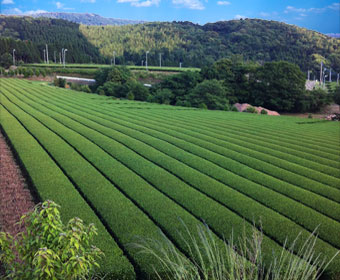
Is There Really a Global Matcha Shortage?
Updated: July 14, 2025
Have you heard the online buzz lately? People are buzzing with concern over a ‘global matcha shortage’, claims of empty shelves and skyrocketing prices are flying around like matcha powder in a blender.
Here at My Matcha Life®, we have seen a few larger-than-usual orders recently, but a worldwide shortage? At first, that sounded a bit sketchy. One of our local retailers told us their wholesaler hiked prices by 140%—seriously?!
Should You Be Stockpiling Matcha?
Is this like the toilet paper panic of 2020 all over again? Should you be hoarding your favorite ceremonial matcha before it becomes the next gold bar?
As lifelong matcha lovers and committed suppliers of high-quality matcha powder, we had to get to the bottom of it. So, naturally, we dug a little deeper.
Is the Matcha Shortage Real?
Short answer: mostly yes for high grades.
Every year before the spring harvest, there’s always a natural dip in supply. We’ve seen it before, and honestly—it’s something we plan for. But this year’s buzz is different, so what’s behind it?
- TikTok influencers hyping matcha like it’s the new avocado toast.
- Record high tourists visiting iconic tea towns like Uji and Kyoto, scooping up local matcha in record amounts.
- Some growers ran out of their seasonal supply of high-grade matcha due to this demand spike.
- Countries in EU and the Middle East finally awakened to the magic of Japanese matcha.
The seasonal surge is not unusual, but the similar timing of all these influences has indeed strained the supply of ‘high quality Japanese matcha’. However, lower grades of matcha used largely for confections, and to some degree in nutraceuticals, are still easily available. So, yes there are definite supply challenges for high grade matcha, but no shortage of lower grade.
Long-term Matcha Supply Concerns?

While the current situation is slightly hype and somewhat crisis, there are long-term issues that could affect the future of Japanese matcha production:
- 🧓 50% of Japan’s tea farmers are over 65 years old
- 🌿 37% of tea bushes are over 30 years old, which impacts leaf yield and quality
- 📉 62% fewer commercial tea farms in Japan’s key regions compared to 2015
- 🏙️ Young people are moving to the cities, leaving fewer to carry on the farming tradition
(Data from https://gjtea.org/)
So yes, these are real challenges. And they raise the question: who will grow your matcha in the next 10–20 years?
What This Means for You Now (and Your Matcha Habit)
Okay, here’s the deal.
- Global demand for matcha has been rising steadily since 2005.
- Social media and new markets (hello, Europe!) are fueling that growth.
- Only so many tea bushes are allocated to matcha production each year.
- It takes 1 hour of grinding to make just 1 ounce of MML matcha powder—this isn’t mass-produced, low-grade stuff!
So when demand suddenly spikes high there can be a temporary shortage. But don’t worry. At My Matcha Life®, we’ve planned ahead and secured your stash, for now. But stay tuned. We don’t have a crystal ball and things may change.
Spring harvest 2025 leaves will have aged, been tested, and be ready for grinding by end of September/October. Unless we suddenly see a ton of new customers, we will be able to maintain our current demand until then. Still the best advice… get your fave matcha sooner than later.
Rising Prices: There are some strategies for keeping price increases to a minimum and matcha growers are exploring ways to do that as we write. As 2024 crops finish and 2025’s hit the market, we expect high quality matcha like our Tea Lover’s Organic Ceremonial and our Barista’s Premium Matcha to be affected, by how much we don’t yet know. It may be a rocky matcha ride for the next two years, so stay tuned!
Final Sip: Don’t Panic, Just Pick Smart 🍵

Let’s not have any FOMO like a toilet-paper-level panic😊
Yes, there are real factors affecting the matcha world—from aging farmers to viral TikToks—but that’s exactly why it’s more important than ever to choose your matcha wisely.
At My Matcha Life®, we’ve built strong relationships with Japanese growers, carefully manage our inventory, and stay committed to providing only the highest-quality matcha powder—no filler, no fluff, no panic.
So, if you’re craving a daily matcha moment you can count on?
👉 Stick with us and shop My Matcha Life® matcha.
Your morning ritual (and your taste buds) will thank you.
Leave a Reply
You must be logged in to post a comment.